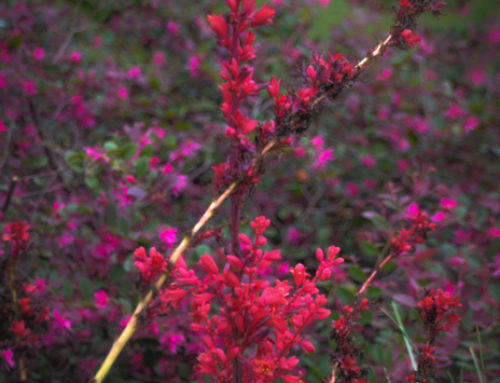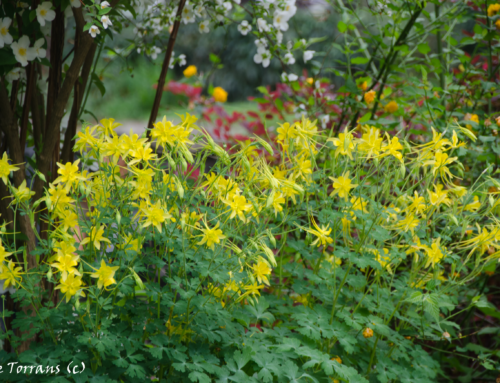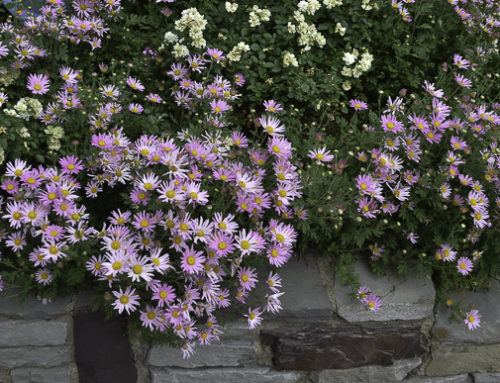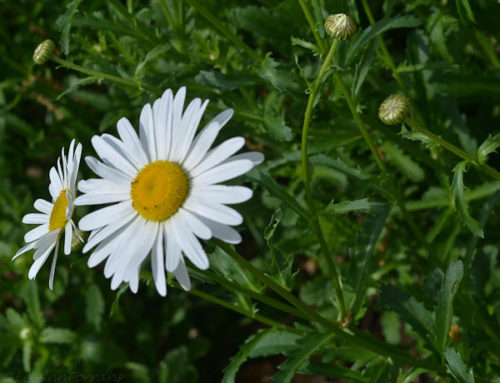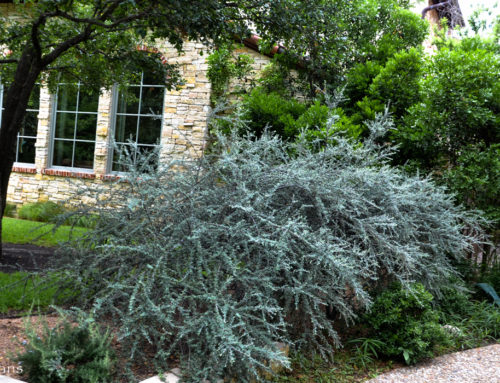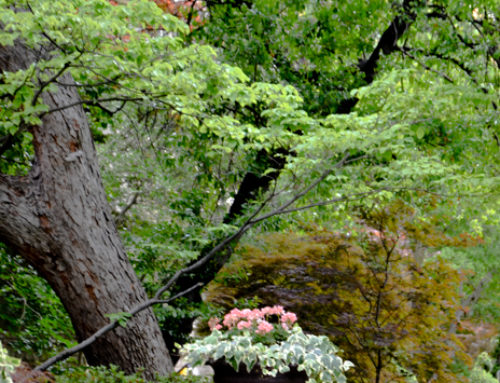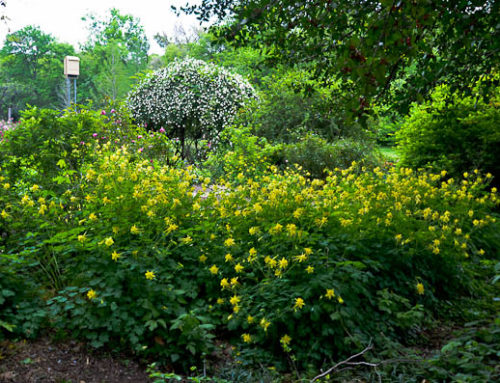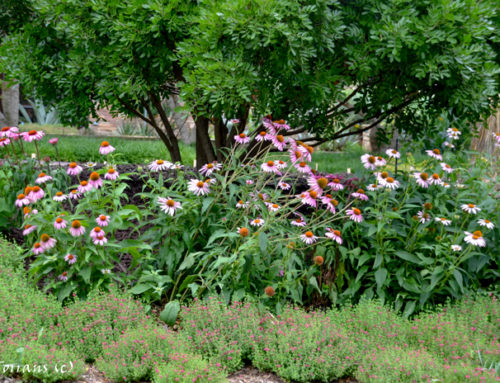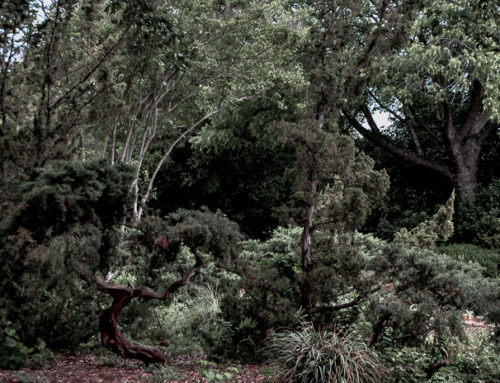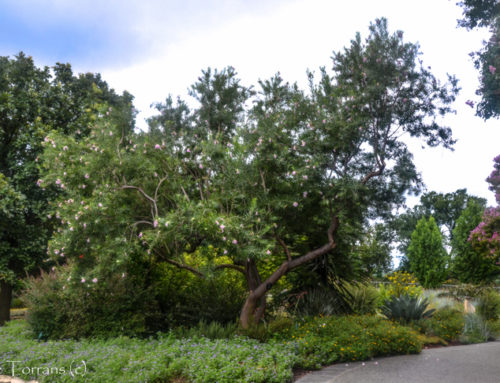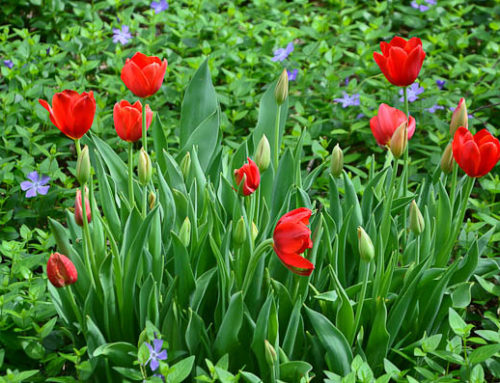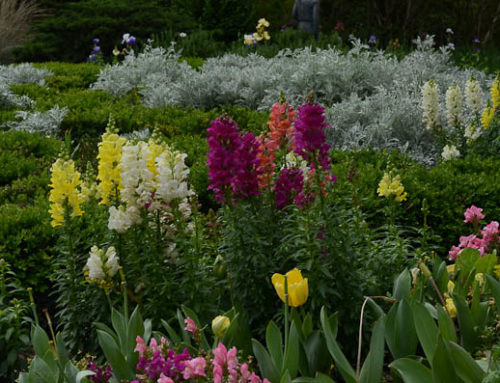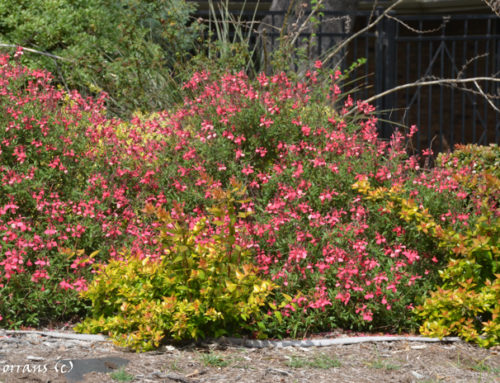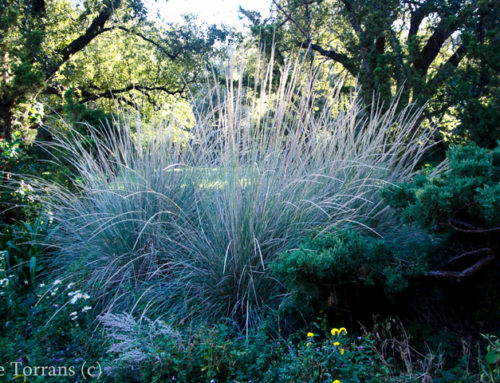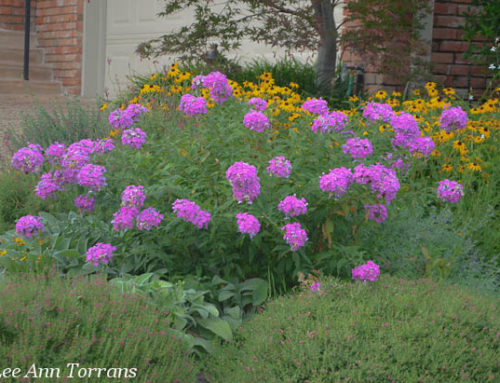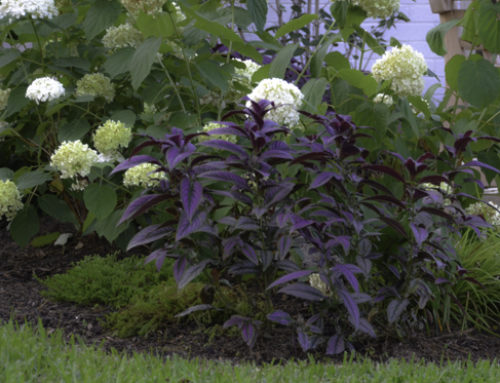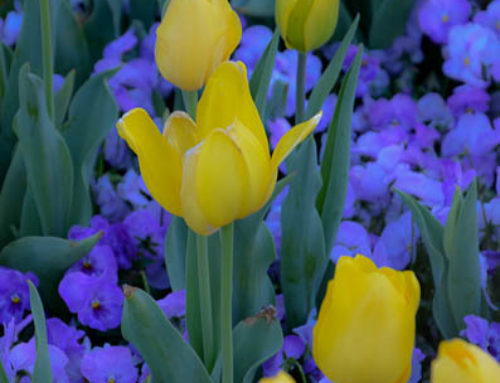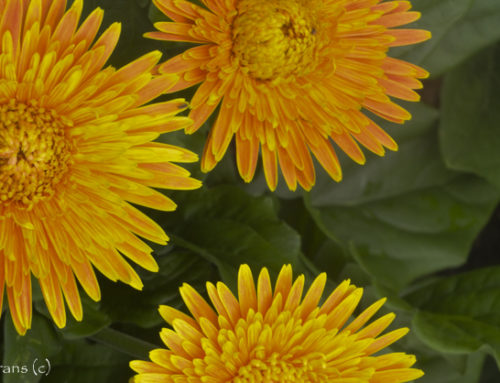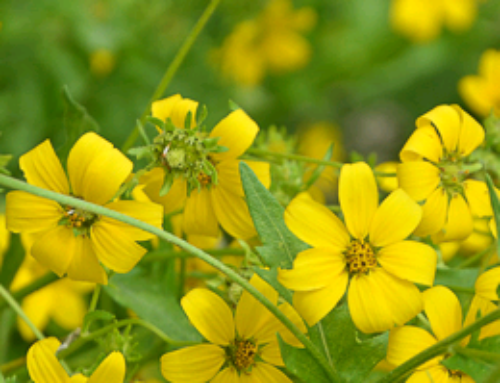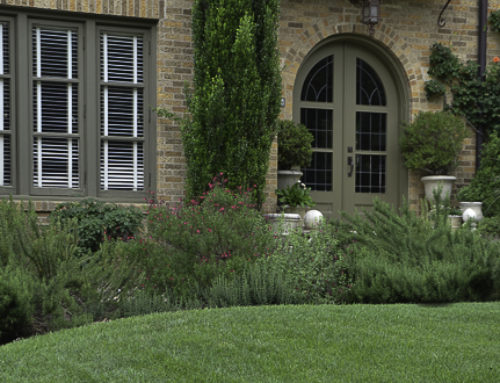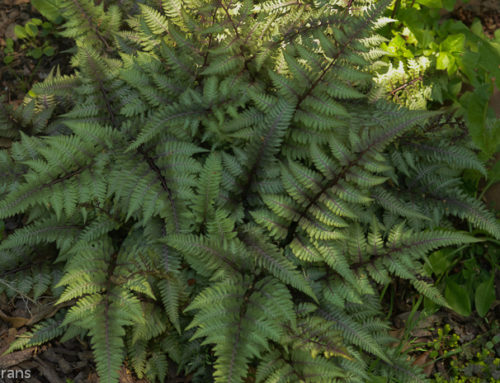Lantana
Lantana acts as a perennial in Texas. Once the root structure becomes established you may have it in your garden for a long, long time. A strong root system means your lantana can ride out the hot Texas summers and even drought conditions, returning the next year from the root structure.
Having a sterile lantana which does not form berries means you will have continuous blooms. If your lantana has berries they must be removed before the lantana blooms again. The berries are considered poisonous.
I always plant: lantana with purslane. The purslane pops up as lantana expands and provides color variation to the solid lantana. Purslane closes in the evening so alone it does not work for me but combining purslane and lantana is my first choice whether you are aiming for a contrast or a blend in color.
Below you see artemsia in the background which gets leggy, the lantana will cover that so that’s a good combination as well. Artemesia is a perennial.

Orange purslane, gold lantana and artemesia.
‘New Gold Lantana’ and ‘Gold Mound Lantana’ are heavy bloomers with deep gold flowers. They reach 2 feet tall and 4 feet wide and they do not produce berries. I have always planted Purslane with my lantana. Purslane closes at night so I have never liked to plant it by itself. This mixture of orange purslane, gold lantana and artemesia is a stunning combination.
New Gold, Dwarf Pinkie, Samantha (Lemon Swirl), Weeping Lavender and Weeping White are sterile.

Miss Huff Gold and Pink Lantana

Miss Huff Lantana has berries. Lantana berries are poisonous.
‘Miss Huff’ is the much loved coral, yellow and orange lantana which can reach 5 to 6 feet tall in one season. It has no berries.

Mozelle Lantana
Mozelle is the pale yellow lantana center circled in a light pink it also reaches five to six feet and has no berries.

Red Yucca with Purple Shamrock and Golden Lantana.

Lantana Berris Poisonous




Lantana, Nandina and Vitex Tree
 Irene is a beautiful magenta color with a gold interior. It reaches four feet.
Irene is a beautiful magenta color with a gold interior. It reaches four feet.


